On August 11 the U.S. Fish and Wildlife Service delisted three endangered subspecies of island fox, the smallest wild canid in North America and native to six of the eight Channel Islands off southern California.
This was the fastest mammal recovery in Endangered Species Act history and one of the most challenging. Listing happened only 12 years ago.
At 4 to 5 pounds, the island fox is outweighed by most house cats, yet it is the islands’ largest endemic land mammal. It climbs trees to raid bird nests. It has been known to leap onto campers’ laps to grab food, then make off with their shoes, shaking them puppy-style.
The species is native only to the islands of Santa Cruz, Santa Rosa and San Miguel (all within the Channel Islands National Park), San Nicolas and San Clemente (managed by the Navy) and Santa Catalina (managed largely by the Catalina Island Conservancy). Because Santa Catalina gets a million tourists a year and is rife with boat traffic and alien disease vectors, that subspecies was only downlisted to threatened. San Nicolas and San Clemente foxes were never listed.
The recovery, observes USFWS director Dan Ashe, “points to the strength of the ESA.” True; but recovery was well underway years before listing. So precipitous was the decline that early action by the National Park Service, The Nature Conservancy (which owns 76 percent of the largest island, Santa Cruz), the Catalina Island Conservancy, and many collaborators probably kept some subspecies from blinking out well before ESA protection.
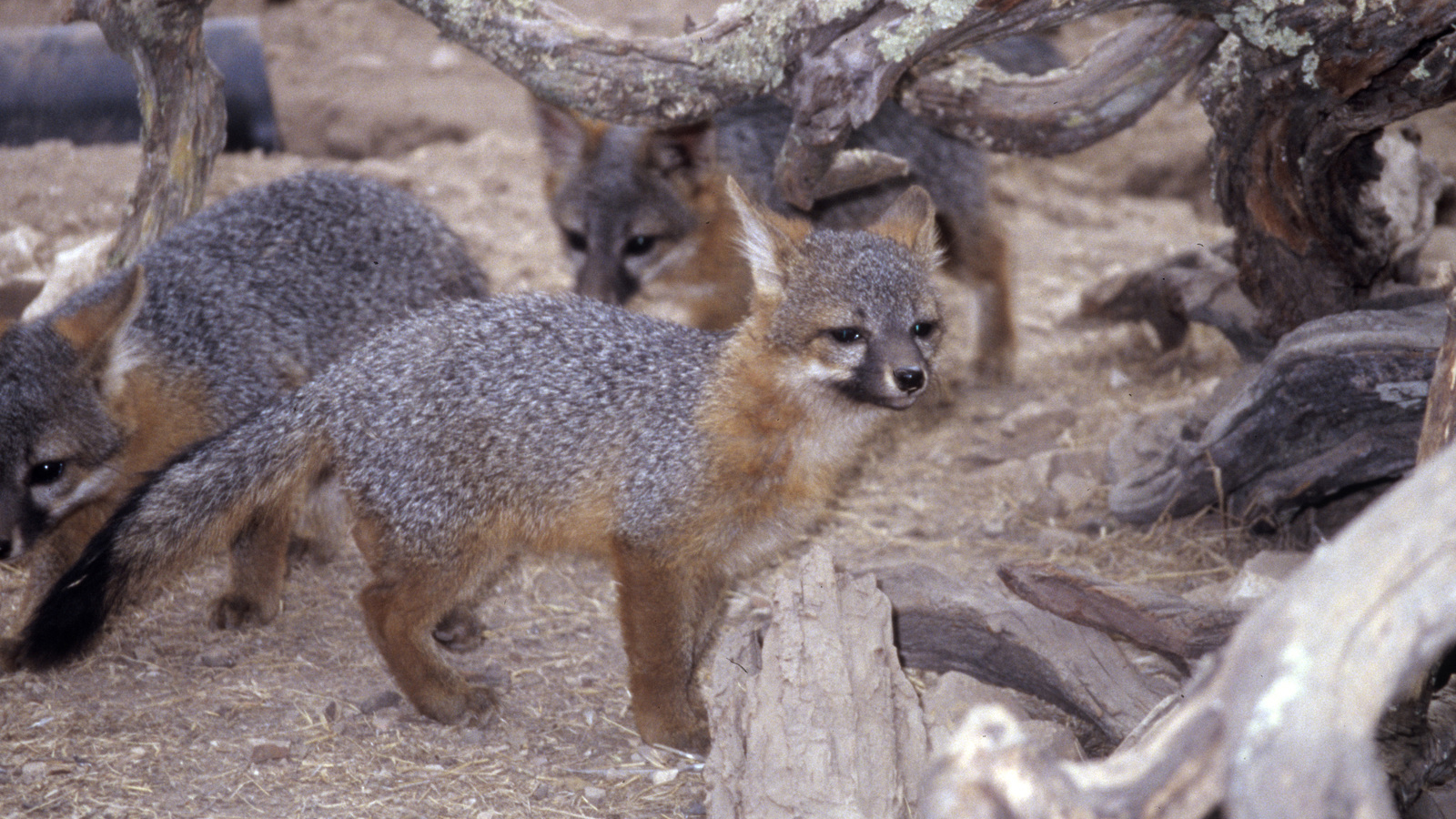
A lot has been written about island fox recovery, but little about the ecological morass that, at enormous effort, the partners had to understand and untangle.
An Island Unravels
As recently as the 1990s island foxes were doing okay. Then they crashed. What was happening? There was much to figure out and little time to do it.
Invasive aliens were unraveling ecosystems. For a century feral pigs had been tearing up soil on Santa Cruz, creating ideal conditions for alien-plant invasion. On Santa Rosa cattle and sheep had hammered native vegetation to the point that 80 percent of the island was dominated by alien grasses. And black-tailed deer and Roosevelt elk, introduced by the former owners for hunting, prevented regeneration of many woody natives. Santa Catalina was (and is) blighted by alien deer and feral house cats, both fed by island residents. Rats infested (and infest) Santa Catalina and San Miguel.
But through all this the resilient little foxes had held their own. What was suddenly different?
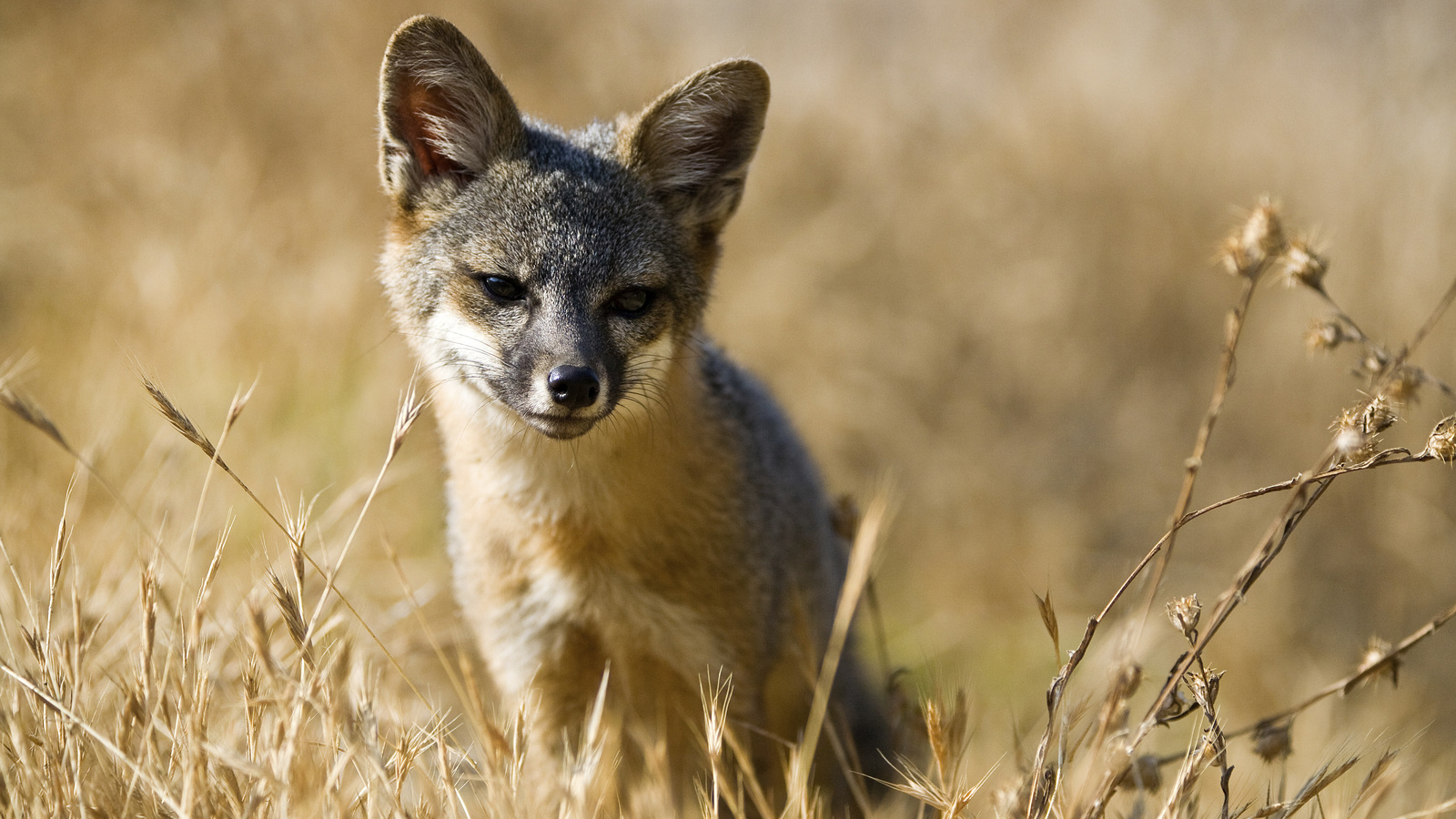
Research revealed that the main cause of fox mortality on the northern islands (San Miguel, Santa Rosa and Santa Cruz) was predation by golden eagles, historically absent but attracted from the mainland by the ungulate smorgasbord. Foxes, taken as ancillary snacks, were especially vulnerable. Having evolved with no predators, they hunted by day and didn’t look up.
If goldens had arrived before mid-20th century, they’d likely have been run off by bald eagles, which prefer marine-based prey. But the islands’ bald eagles had been extirpated by DDT dumped into the Southern California Bight by Montrose Chemical Company.
Gradually, the prescription for recovery of foxes became clear.
They needed protection from golden eagles, so captive-breeding facilities were established. Golden eagles had to be captured and relocated to the mainland; and the ungulate food supply that had drawn them to the islands and was keeping them there needed to be eliminated. Finally, as a probable means of keeping goldens at bay, bald eagles needed to be reestablished. Given the precariousness of the fox population, all this needed to happen at once.

Aside from the challenges of eradicating the elusive pigs on such a large and rugged island as Santa Cruz, the Park Service and the Conservancy had to divert precious time and resources defending against five lawsuits brought by animal-rights activists committed to the preservation of feral pigs. Fortunately for the foxes, none succeeded.
A rapidly expanding population of wild turkeys, introduced for hunting before Conservancy and park ownership, could have kept golden eagles on Santa Cruz; so they had to go, too. That eradication brought another failed lawsuit from the animal-rights crowd.
By 2006 Santa Cruz was pig- and turkey-free. But next door, on Santa Rosa, deer and elk still served as a magnet for golden eagles. In 1986 the park had bought the island for $30 million, grandfathering hunting rights for deer and elk until 2011.
Sale of guided hunts hadn’t been especially profitable until a 1997 lawsuit brought by the National Parks Conservation Association forced removal of cattle. With cessation of grazing, habitat started to recover. Suddenly elk and deer were growing to trophy size, and hunts were selling for a minimum of $8,000 a pop. So the former owners sought to nullify their signed agreement, eliciting loud support from politicians, hunters and the NRA.
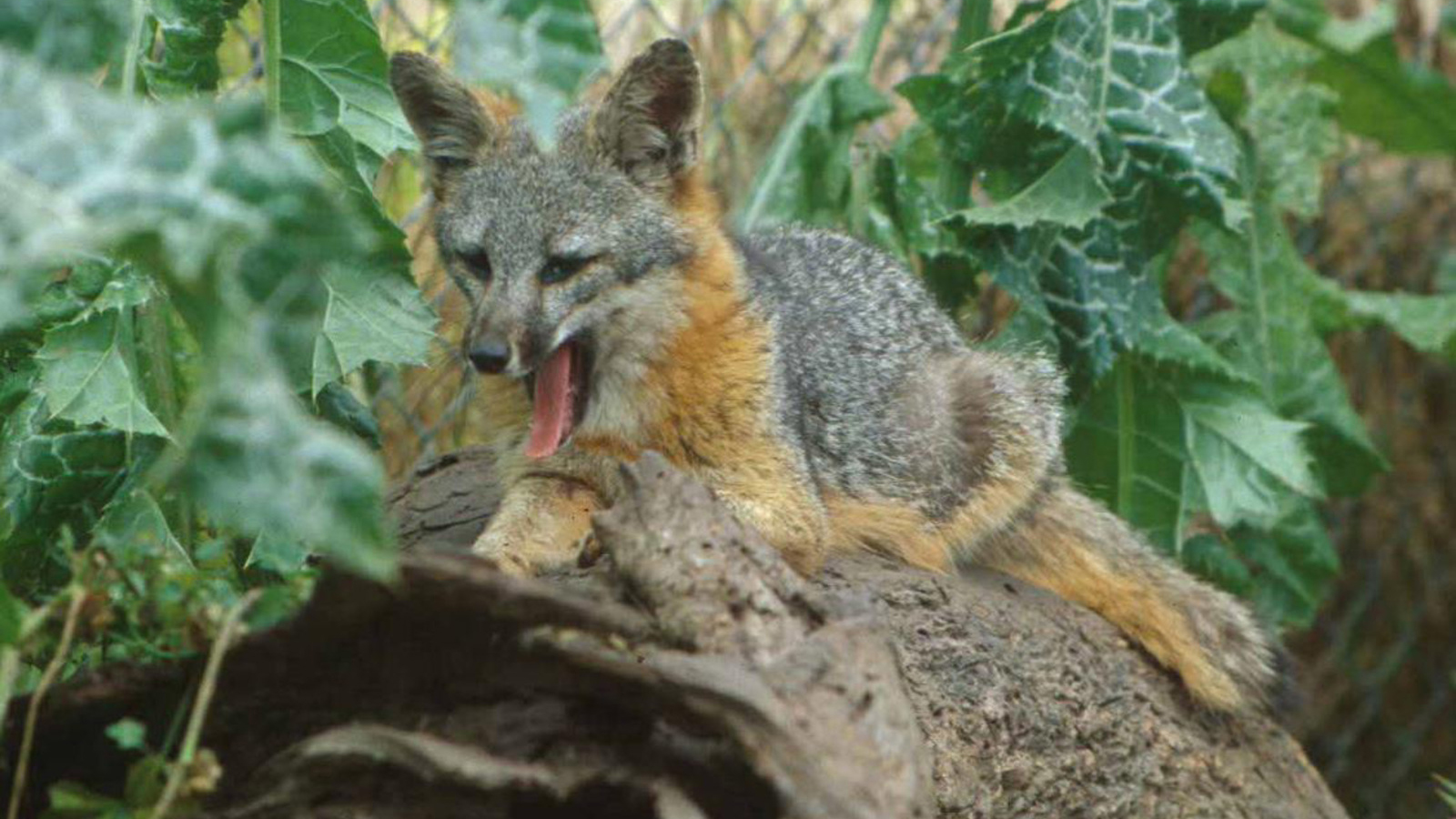
The park stood tall and hired sharpshooters. Now that island, too, is free of introduced ungulates.
Meanwhile, golden eagles were being trapped and relocated to northern California. Remotely triggered “bownets” buried in the dirt and baited with pig carrion, live rabbits or piglets worked for a while, but the birds learned to avoid them, causing exponential increases in effort and cost. Biologists advocated lethal take permits from the Fish and Wildlife Service; but, mindful of the political fallout, the partners wisely declined. A plastic egg with a remotely controlled syringe to deliver tranquilizer was placed in one nest; but a parent flipped it, and the needle stabbed sticks. A tangle of fishing line attached to a dummy fox failed to catch eagles. In 2005-2006 just seven birds, including three hand-captured nestlings, were evacuated at a cost of $600,000. The last pair, seemingly immune to capture, went on a two-year fox-killing spree until they were safely captured with a netgun fired from a helicopter. By 2007, 44 golden eagles (eight of which were nestlings) had been removed from the northern islands.
On Santa Cruz the partners “hacked” young bald eagles to the wild in hope that they’d mature, establish breeding territories and drive away golden eagles. In 2006, for the first time in half a century, bald eagles (two pairs) successfully nested on Santa Cruz. As of 2015 there were 40 bald-eagle nests on the Channel Islands.
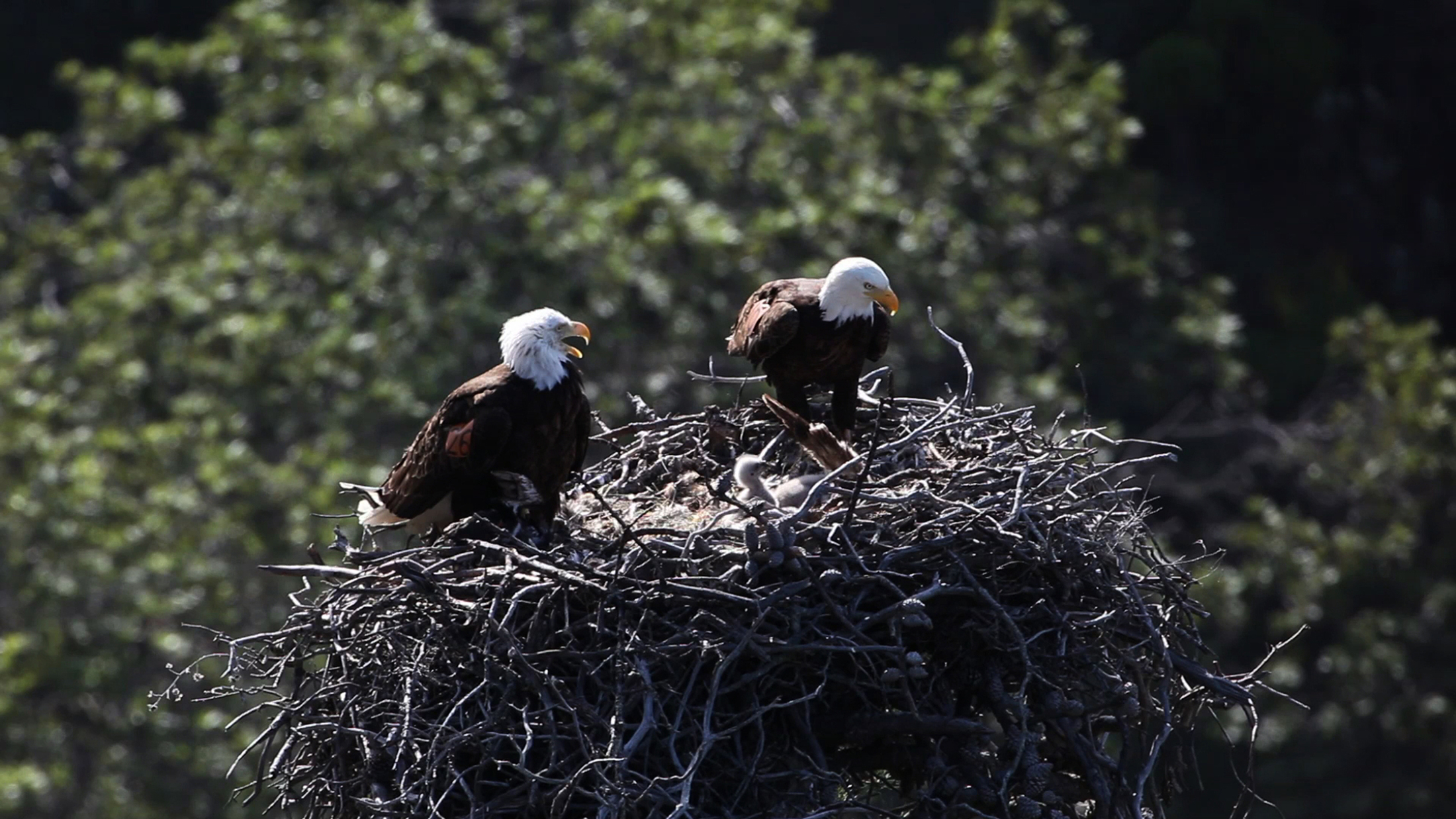
On Santa Catalina golden eagles were never a problem. What was killing foxes there was canine distemper, probably introduced by visiting or resident dogs or by raccoons that occasionally stowaway on boats from the mainland. Today, on all islands a “core population” of foxes is vaccinated against rabies and distemper to make sure there’ll be sufficient survivors, if those diseases arrive.
Captive fox breeding, initiated on all four islands in 1998 and hugely successful, ended in 2008.
All manner of native plants, many imperiled and many important to foxes for food and cover, are surging back. So are the foxes. Today population estimates show foxes have increased on San Miguel and Santa Rosa from 15 each to about 600 and 1,000 respectively; on Santa Cruz from 55 to at least 2,000; and on Santa Catalina from 103 to 1,800.
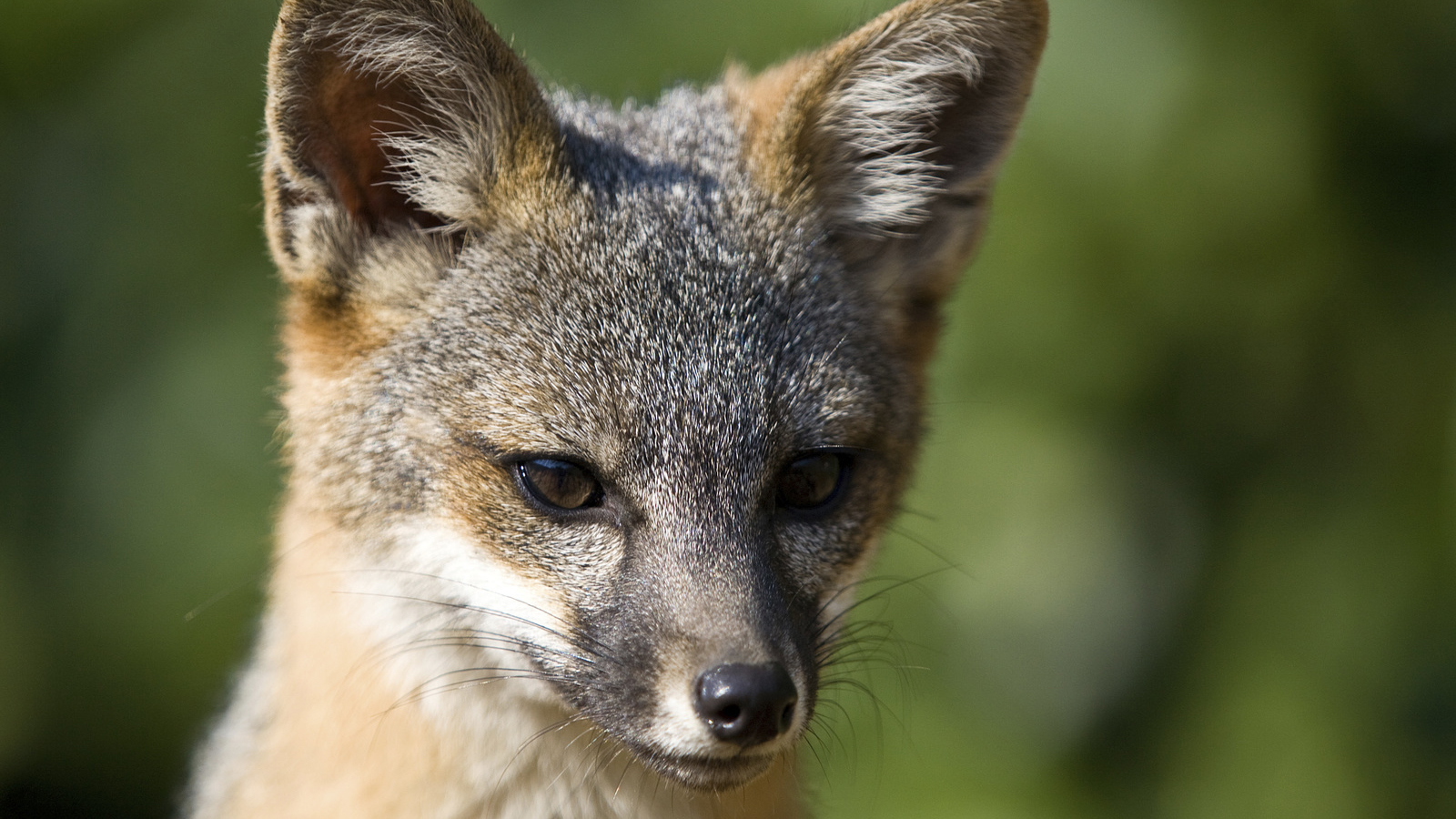
What We Can Achieve Together
“The intense, multifaceted intervention that kicked into gear before listing definitely set the stage for an accelerated recovery,” says Dr. Scott Morrison, director of science for The Nature Conservancy. “The listing then galvanized the partnerships and resources we needed to pull everything off. The take home for me is that this project shows what can happen when people get together and just decide they’re not going let something special go extinct on their watch.”
Dan Ashe had it right when he went on to remark that island fox recovery “demonstrates what we can achieve together.” What it also demonstrates is the vulnerability of island ecosystems to introduced aliens, how quickly island wildlife can spiral toward extinction, and how quickly it can recover when managers are willing to do what’s necessary — even if not forced to do so by law and despite litigious broadsides and political heat.
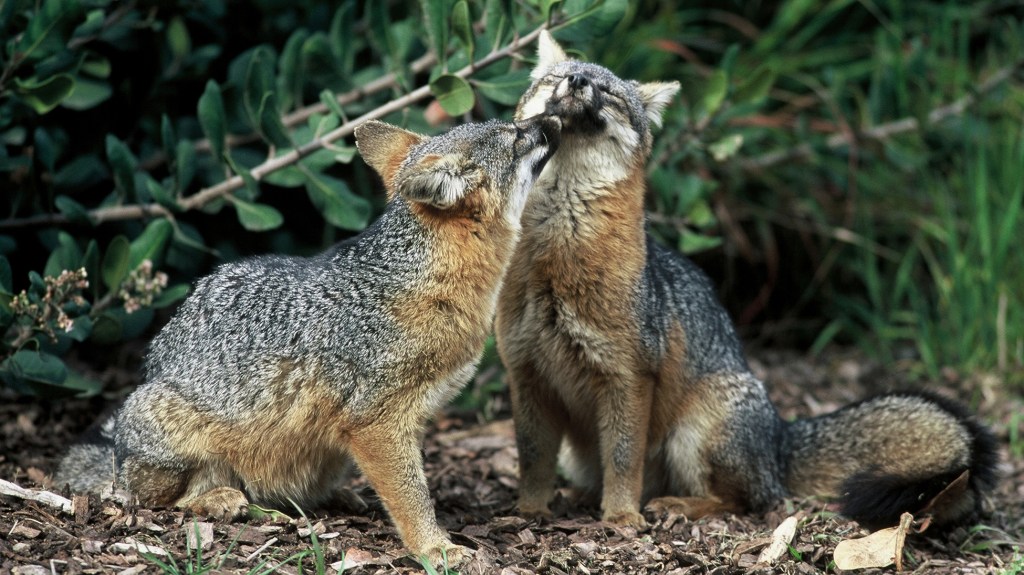



“just seven birds, including three hand-captured nestlings, were evacuated at a cost of $600,000.” This is an outrage. Who is in charge of spending on these projects?
Delighted you saved these adorable little foxes from extinction.
Unfortunately, we now have an ignorant, uncaring administration in Washington, that is greedy to the point of stupidity! As Trump (and the Republican Congress/House) is quickly undoing all of the laws president Obama was able to put into place thanks to executive orders, I see our beautiful Mother Nature deteriorate. I sincerely hope that organizations like yours will dig in and defend the laws that hopefully will allow us to leave some of Nature intact for our children, grandchildren and their grandchildren. Thank you for all of your efforts.
Thank you for helping with ALL of the endangered species for this and future generations to come. Every animal is important
As someone who has donated money to your organization for over 20 years, I don’t really appreciate the comment about the ‘animal rights crowd’-I think it shows a huge lack of empathy and I think we have enough of that in this world today…this is the first I’m hearing that it’s mutually exclusive to believe in animal rights and natural habitat/species conservation…I’m definitely on the side of the foxes in this story, I simply feel that there should be as much humane treatment as possible in dealing with the other species-they ARE sentient beings after all-and most importantly-let’s remember that they didn’t put THEMSELVES there-the most invasive species of all-HUMANS-did that….
Everything, before and now, i’m respected the place, this is very important for further!
we must as the dominate and only life form that can change the way we live our lives and the do all we can to protect the life that remains. we are causing the biggest mass extinction dew to a vary careless way of life. we must take great care of this earth that keeps us alive! losing thousands of kinds of life every year is a giant red flag. also with 1 in 2 guys and 1 in 3 women getting cancer in there lives now and 10,000 a week dying from it! with over population and a government here in the USA that refuses to except a very real and very deadly threat like climate change and there up coming push to get rid of our limit the EPA is there to protect life!
these things must be talked about and changes must come very very soon! I would suggest they are put to the for front and take a place on TV since most people spend hours a day watching anyway! educate them! make plans on how to turn this self destruction around to a thriving green planet!
I m a retired BiolOGEST and I know 4 a completely real fact TAT THE FOXES ARE REaly delicus to eat, but increBILSY CUTE 2!!!!!!!!!!
I spent many years off the coast of Catalina, in the years I was young. From there a feel for the isolation or strength of the ecology was real. Fishing, and fish species not the open space of the island and its inhabitants and plottage showed a prospect for renewal. So much land, but bordered by ocean made this my perspective. So many persons visit for both, so the personality of reference is mine.
I went infrequently onto the island, along a road to two harbors, or to Avalon infrequently. Similarly I might have a couple of sightings I’ve seen. A Black Sea Bass in a kelp pattie, runs of common fish around the place, or the climate around the steep west of the island.
So these succinct article now published are great to me, like character of the story and still the reach for what references can tell about responsibility for these. Any readers, and collect substantiation made this story attractive. And the appeal is that it took place about this same time, from around the eighties ’till today.
An amazing accomplishment in spite of many difficulties. I so admire people who show this degree of dedication to the welfare and protection of endangered species. We need more dedicated people like this. Many thanks to them, and may their successes continue.
I’m starting to get very irritated with eagles!!! Just heard on NPR a week or so ago about the eagles decimating bird populations severely in many places. Now that eagle populations have burgeoned, thanks to their protection, they are raiding the nests of all other birds and stealing their eggs and chicks, decimating the populations of the other birds!
It may be time to think of ways to keep eagles in check if we want other birds and animals to survive. Eagles have never been among my favorites anyway; they are such big bullies and always look angry.
Uplifting and inspiring story, well-written and very informative. I prefer this kind of news more than what we find now in the “hard news” on TV or newsmagazines. I plan to eventually read the other stories that came with this email. Thank you!
Thank you for the great summary of the saga of the island fox recovery, and The Nature Conservancy’s part in it. It’s a testament that careful observation, scientific analysis, and most of all PERSISTENCE pays off. I knew of the foxes’ plight and some of the recovery efforts. To read the whole story is fascinating.
The foxes are a special part of the islands, and all the more because the islands are their native and only home. It was worth the effort to save them.
I lived in Ventura, CA when the were rescuing the last surviving foxes in the late 90’s… The Ventura County Star had a great article about it and I’ve been following the story ever since.
Effort, time, money, caring made this possible and to me, its amazing! Thanks for this great update!
Wonderful story! I wish we could do as well here in the Hawaiian Islands.